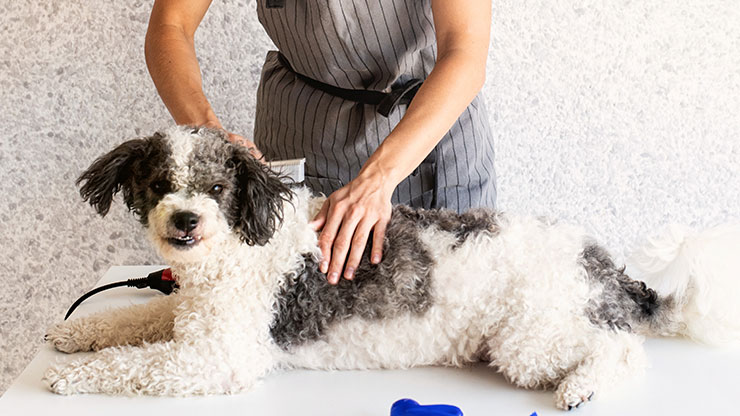
Socializing Your Puppy to the Groomers: A Step-by-Step Guide
Socializing your puppy with the groomers is essential, particularly if you own a long-haired or large dog breed. The groomers and grooming process can be intimidating and scary for dogs who aren’t used to it, so you must ease them into everything at a pace that works for them. In this guide, we’ll explore how you can do this to ensure your dog has a positive and stress-free experience at the groomer.
Start Desensitization Early
You will unlikely be able to bring your dog to the groomers within the first few weeks of having them. If you have a puppy, you must wait until after their second set of immunizations. If you bring home a rescue dog, they’ll likely take some time to adjust to the changes and develop a relationship with you - we would not recommend bringing them into a new and overwhelming situation while that bond is being established. However, that doesn’t mean you can’t be proactive from home. Introducing your dog to the various tools and equipment groomers commonly use can help them remain calm when they’re at the groomers.
A couple of things tend to trigger dogs the most, which you should focus on first during your desensitization training.

Dog Clippers
A great way to build resilience before you get to the groomers is to get a pair of clippers (or any handheld device you own that makes a similar noise) and get them used to having it near their faces. Don’t clip your dog's fur, though - leave that to the professionals.
Dryers
To help reduce anxiety when you’re at the groomer, getting your dog used to the noise of a hairdryer and the sensation of having air blown at them can be a great idea. Although, make sure you use the cool setting! Your dogs may be nervous and uncomfortable initially, so reward them for being around the tools. If your dog shows signs of anxiety, stop what you are doing, calm them down, and then try again from a further distance. Once your dog is happy to be around the tool, you can slowly build them up to be comfortable while you “use” it.
Handling
Another thing that can be triggering for dogs at the groomers is being handled. Getting your puppy used to being touched will help reduce the anxiety of being in the groomer. Some areas tend to be more of a trigger, which includes paws, ears, face, bottom, and intimate areas. Once you are comfortable handling your dog, allow different people, such as family members and friends, to handle and groom your dog. This helps your puppy generalize their positive grooming experiences to different individuals, reducing their anxiety when the groomer handles them.
Positive Reinforcement
Positive reinforcement is so important when socializing and desensitizing your dog to a situation. When they cope with a situation or have a calm demeanor, make sure to reward your dog. Rewards can come in a lot of different forms, such as verbal praise, physical praise, dog treats, or rewarding them with their favorite toy.

Introductory Session at the Groomer
Most groomers offer an introductory grooming session to any dogs that need it; this allows them to take everything at your dog's pace, starting with basic procedures such as brushing or bathing. Depending on how your dog reacts, they may also want to introduce more grooming tools, such as the dryer and clippers. Bringing your dog's favorite treats and/or toys can be a great idea so the groomer can continue the positive reinforcement throughout the session.
Conclusion
It’s recommended that once you get your dog desensitized and have started getting your dog groomed, it is best to have a regular grooming schedule and continue training. Regularly grooming your dog will help get them used to the situation and build their confidence over time. It’s not enough to go once a year, as they’re likely to have forgotten their progress last time.










